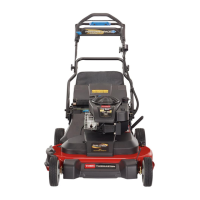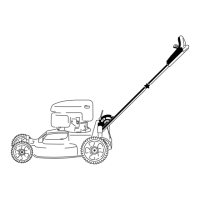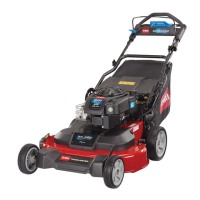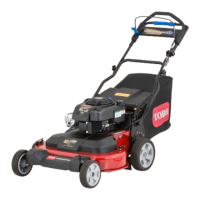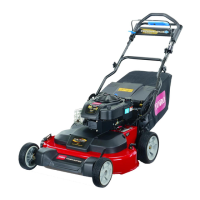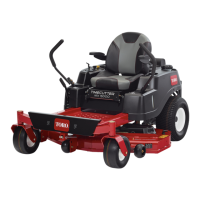the fuel tank to run dry through normal
usage. If you must tip the machine prior to
running out of fuel, use a hand fuel pump
to remove the fuel. Always tip the machine
onto its side, with the dipstick down.
W ARNING
T ipping the machine may cause the fuel to
leak. Fuel is ammable, explosive, and can
cause personal injury .
Run the engine dry or remove the fuel with a
hand pump; never siphon.
Servicing the Air Filter
Service Interval : Before each use or daily —Check
the air lter and clean or replace it,
if necessary .
Every 50 hours —Clean the air lter; clean it
more frequently in dusty operating conditions.
Y early —Service the air lter; service it more
frequently in dusty operating conditions.
Every 200 hours —Replace the air lter; replace
it more frequently in dusty operation conditions.
1. Loosen the fastener and remove the air-lter
cover ( Figure 29 ).
g017216
Figure 29
1. Cover
3. Filter
2. Fastener 4. Base
2. Remove and inspect the lter .
• If the lter is damaged or is wet with oil or
fuel, replace it.
• If the lter is dirty , tap it on a hard surface
several times or blow the debris outward from
the interior of the lter using compressed air
at less than 207 kPa (30 psi).
Note: Do not brush or blow dirt from the
outside of the lter; either forces dirt into the
bers.
3. Clean the air-lter body and cover using a damp
rag. Keep dirt away from the air opening.
4. Install the lter onto the base.
5. Install the cover and screw the fastener down
securely .
Changing the Engine Oil
Service Interval : After the rst 5 hours
Every 50 hours
Y early
Note: Run the engine a few minutes before changing
the oil to warm it. W arm oil ows better and carries
more contaminants.
Engine Oil Specications
Engine oil capacity
0.53 L (18 oz)*
Oil viscosity SAE 30 or SAE 10W -30
detergent oil
API service classication SJ or higher
*There is residual oil in the crankcase after you drain
the oil. Do not pour the entire capacity of oil into the
crankcase. Fill the crankcase with oil as directed in
the following steps.
1. Move the machine to a level surface.
2. Refer to Preparing for Maintenance ( page 22 ) .
3. Remove the dipstick by rotating the cap
counterclockwise and pulling it out ( Figure 30 ).
23

